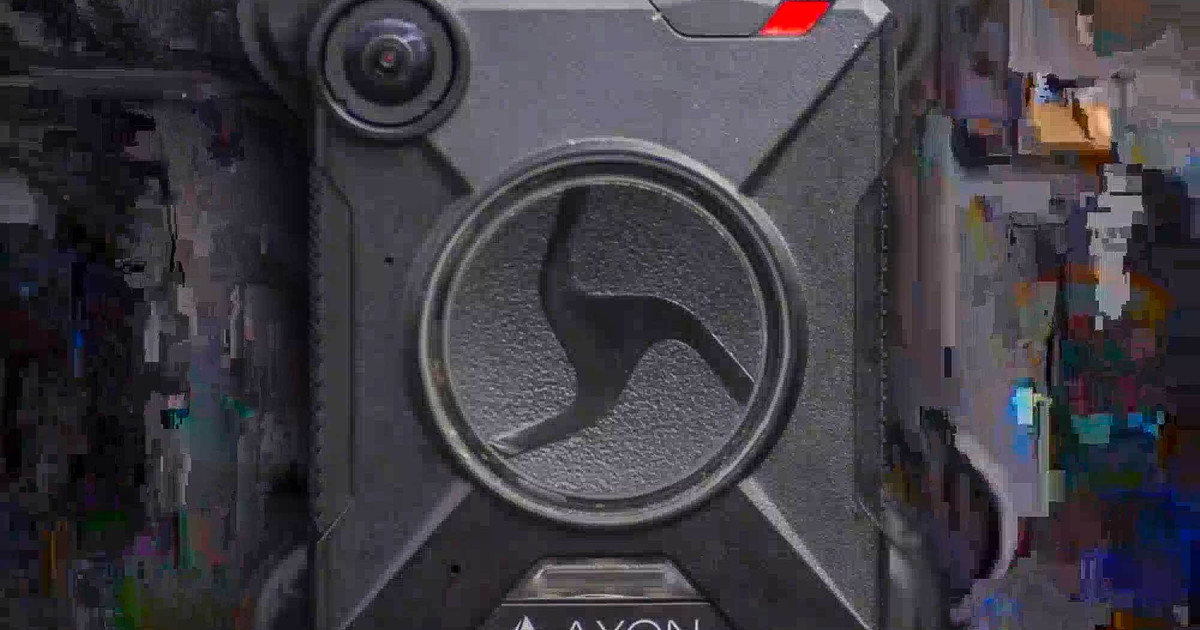
Police Departments Are Turning to AI to Sift Through Millions of Hours of Unreviewed Body-Cam Footage
Body camera video equivalent to 25 million copies of “Barbie” is collected but rarely reviewed. Some cities are looking to new technology to examine this stockpile of footage to identify problematic officers and patterns of behavior.
An Axon body camera worn by police in Los Angeles Credit:Animation by Lisa Larson-Walker/ProPublica. Photo by David McNew/Getty Images.
Criminal Justice
Police Departments Are Turning to AI to Sift Through Millions of Hours of Unreviewed Body-Cam Footage
by Umar FarooqFeb. 2, 5 a.m. ESTBody camera video equivalent to 25 million copies of “Barbie” is collected but rarely reviewed. Some cities are looking to new technology to examine this stockpile of footage to identify problematic officers and patterns of behavior.
REPUBLISH
Series:Black Boxes: How Police Undermined the Promise of Body Cameras
Body-worn cameras were supposed to deliver a revolution in transparency and accountability to policing. But in cities across America, the revolution never arrived.
ProPublica is a nonprofit newsroom that investigates abuses of power. Sign up to receive our biggest stories as soon as they’re published.
Over the last decade, police departments across the U.S. have spent millions of dollars equipping their officers with body-worn cameras that record what happens as they go about their work. Everything from traffic stops to welfare checks to responses to active shooters is now documented on video.
The cameras were pitched by national and local law enforcement authorities as a tool for building public trust between police and their communities in the wake of police killings of civilians like Michael Brown, an 18 year old black teenager killed in Ferguson, Missouri in 2014. Video has the potential not only to get to the truth when someone is injured or killed by police, but also to allow systematic reviews of officer behavior to prevent deaths by flagging troublesome officers for supervisors or helping identify real-world examples of effective and destructive behaviors to use for training.
But a series of ProPublica stories has shown that a decade on, those promises of transparency and accountability have not been realized.
One challenge: The sheer amount of video captured using body-worn cameras means few agencies have the resources to fully examine it. Most of what is recorded is simply stored away, never seen by anyone.
Axon, the nation’s largest provider of police cameras and of cloud storage for the video they capture, has a database of footage that has grown from around 6 terabytes in 2016 to more than 100 petabytes today. That’s enough to hold more than 5,000 years of high definition video, or 25million copies of last year’s blockbuster movie “Barbie.”
“In any community, body-worn camera footage is the largest source of data on police-community interactions. Almost nothing is done with it,” said Jonathan Wender, a former police officer who heads Polis Solutions, one of a growing group of companies and researchers offering analytic tools powered by artificial intelligence to help tackle that data problem.
The Paterson, New Jersey, police department has made such an analytic tool a major part of its plan to overhaul its force.
In March 2023, the state’s attorney general took over the department after police shot and killed Najee Seabrooks, a community activist experiencing a mental health crisis who had called 911 for help. The killing sparked protests and calls for a federal investigation of the department.
The attorney general appointed Isa Abbassi, formerly the New York Police Department’s chief of strategic initiatives, to develop a plan for how to win back public trust.
“Changes in Paterson are led through the use of technology,” Abbassi said at a press conference announcing his reform plan in September, “Perhaps one of the most exciting technology announcements today is a real game changer when it comes to police accountability and professionalism.”
The department, Abassi said, had contracted with Truleo, a Chicago-based software company that examines audio from bodycam videos to identify problematic officers and patterns of behavior.
For around $50,000 a year, Truleo’s software allows supervisors to select from a set of specific behaviors to flag, such as when officers interrupt civilians, use profanity, use force or mute their cameras. The flags are based on data Truleo has collected on which officer behaviors result in violent escalation. Among the conclusions from Truleo’s research: Officers need to explain what they are doing.
“There are certain officers who don’t introduce themselves, they interrupt people, and they don’t give explanations. They just do a lot of command, command, command, command, command,” said Anthony Tassone, Truleo’s co-founder. “That officer’s headed down the wrong path.”
For Paterson police, Truleo allows the department to “review 100% of body worn camera footage to identify risky behaviors and increase professionalism,” according to its strategic overhaul plan. The software, the department said in its plan, will detect events like uses of force, pursuits, frisks and non-compliance incidents and allow supervisors to screen for both “professional and unprofessional officer language.”
Paterson police officials declined to be interviewed for this story.
Around 30 police departments currently use Truleo, according to the company. In October, the NYPD signed on to a pilot program for Truleo to review the millions of hours of footage it produces annually, according to Tassone.
Amid a crisis in police recruiting, Tassone said some departments are using Truleo because they believe it can help ensure new officers are meeting professional standards. Others, like the department in Aurora, Colorado, are using the software to bolster their case for emerging from external oversight. In March 2023, city attorneys successfully lobbied the City Council to approve a contract with Truleo, saying it would help the police department more quickly comply with a consent decree that calls for better training and recruitment and collection of data on things like use of force and racial disparities in policing.
